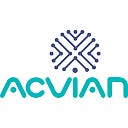Introduction to the India PEO
As of 2021, India’s economy is one of the fastest growing in the world. The country experienced the highest global GDP rebound that year and, despite being affected by rises in food and energy prices, looks on course for further robust performance. The OECD projects India’s economy to grow by 6.9% in 2022, and 6.2% the year after.
India is part of a group of nations known as BRICS, which are fast-growing emerging economies, consisting of Brazil, Russia, India, China, and South Africa. India has the highest GDP of any BRICS country after China (Figure one) and is expected to overtake the US around the middle of the century as well.
India has had some of the highest inflation rates in BRICS since 2021 (Figure two), showing that despite strong bouncebacks in manufacturing and services, the country has a long way to go in terms of recovery. Nevertheless, Inida PEO has remained a powerhouse in the agriculture, information technology, and manufacturing sectors. Because of this, there is plenty of strong international investment into the country.
Because of its strong potential for high output, India remains a competitive location for companies setting up operations. That said, there are lots of specific nuances when it comes to navigating India’s complicated employment law regulations, which were refreshed in 2019. This section takes you through what you need to know about employing people in India.
Recruiting
Background checks, including criminal checks, are common and permitted in India, however medical checks are not allowed unless there is a specific and legally permitted reason to carry one out. Whereas India has similar discrimination protections to other countries, employers must be aware of the indirect communication style of Indians and their need for a socially acceptable job title, as this a common prerequire for marriage.
Employers must take care to set up job titles that will work well in the country, as well as welcoming and structured work environments that suit Indian’s employment preferences.
Contracts
Ensuring a written contract with terms and conditions is important, but pre-tax allowances are very common in India, and this complicates the negotiation process for offers. Basic salary accounts for around 40% of a compensation package, so employers must be sure to understand what is commonly taxed and what isn’t.
Probation periods are typically around three months, and notice periods average around two weeks during probation and one month afterwards. Employees who have five years’ service or more are often entitled to severance payments.
Wages and benefits.
Minimum wage is governed by individual Indian states as well as by sector. Wage inflation is quite common and it’s not unheard of for employees to be given annual increases around 10% to 15%. Pay dates are enshrined in law, with companies employing less than 1,000 workers having to pay salaries before the 7th of each month, and larger companies paying salaries before the 10th, however, being paid on the first of the month is most common. Offering payslips is a legal obligation.
Being offered private health insurance is a common benefit but is often combined with public insurance. Pensions can be groups into three categories; the National Social Assistance Scheme for the elderly, the poor, and the disabled, a National Pension System for civil servants, and a state-provident fund operated by the Employee’s Provident Fund Organisation, where employee contributions of 10% to 12% are matched the employer, and the Indian state contributes 1.16% on top of this. This scheme is open for all employees of private and state-owned companies or India PEO.
Holidays
In India, there are ten days paid public holiday, and a minimum of fifteen days offered in terms of paid vacation. Females are offered a minimum maternity leave period of twelve weeks.
Paternity Leave in India
While paternity leave is sanctioned for government employees, there is not such law that indoctrinates the private sector to make it obligatory. Hence, paternity leave in India is open to interpretation by individual companies.
JobsForHer’s Diversity Survey, including 300 companies, has found that 57 per cent of large enterprises provide two weeks and more paternity leaves in India to their male employees. This percentage is considerably low for SMEs and start-ups with 31 per cent.
What stands out and is more alarming is that 14 percent of both large enterprises and SMEs or start-ups have no paternity policies in place at all.
Conclusion
Companies must be aware about which rules and laws need to be followed when employing people in India PEO. One way to simplify this process is to engage an employer of record service. Acvian serves as a global employment partner, taking care of the intricacies of Indian labour law, allowing companies and their leaders to focus on the business of setting up and running operations. Acvian can therefore be a powerful partner to what you do, ensuring your business and its people perform at their best.
